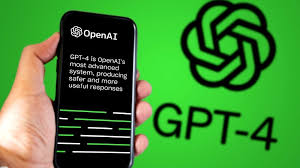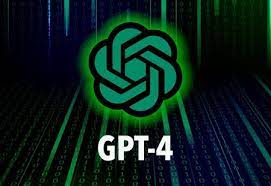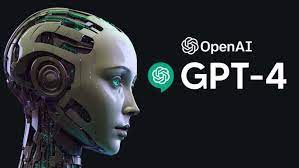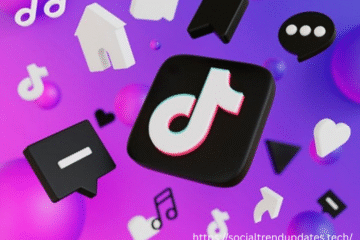The world of artificial intelligence (AI) has made significant strides in recent years, transforming the way we interact with technology. One of the most remarkable developments in AI has been the creation of powerful language models known as Generative Pre-trained Transformers (GPT). These models have the ability to understand and generate human-like text, making them invaluable in various applications such as chatbots, language translation, content generation, and more.
ChatGPT-4
In this blog post, we will delve into the cutting-edge technology of ChatGPT-4, the fourth iteration of the popular language model developed by OpenAI. With advancements in natural language processing and training techniques, ChatGPT-4 promises to take conversational AI to unprecedented heights, offering a more immersive and engaging experience.
- The Evolution of ChatGPT
Before delving into the specifics of ChatGPT-4, it is essential to trace the evolution of the GPT series. The original GPT model, introduced in 2018, laid the groundwork for the subsequent iterations. As each version was released, improvements were made in areas such as model size, training data, and fine-tuning techniques. The earlier versions, GPT-2 and GPT-3, received wide acclaim for their impressive language generation capabilities, leading to the integration of chatbots and virtual assistants.
- The Underlying Technology of ChatGPT-4
ChatGPT-4 marks a significant advancement in the field of AI language models. Like its predecessors, it relies on the Transformer architecture, which enables it to process and understand vast amounts of text data. However, what sets ChatGPT-4 apart is the sheer scale of its neural network. With billions of parameters, it surpasses its predecessors, allowing for a more nuanced understanding of context and user intent.
Furthermore, ChatGPT-4 leverages an improved pre-training strategy, drawing on an even more extensive and diverse dataset. The model is trained on a wide range of internet texts, books, articles, and conversations, ensuring that it captures a comprehensive understanding of human language.

- Advancements in Contextual Understanding
ChatGPT-4’s remarkable size and diverse training data enable it to grasp context more effectively. This advancement helps in resolving complex queries and generating responses that align better with human-like understanding. The model can remember more extended conversational history, making it well-suited for multi-turn interactions. As a result, users can engage in more natural and dynamic conversations with the AI, leading to a more satisfying user experience.
- Enhanced Multimodal Capabilities
Another exciting aspect of ChatGPT-4 is its improved ability to process and generate multimodal content. Unlike its predecessors, which were primarily text-based, ChatGPT-4 can integrate information from various modalities such as images, videos, and audio. This enables it to respond to visual or auditory inputs, making it more versatile in tasks like image captioning, video summarization, and more.
- Few-shot and Zero-shot Learning
ChatGPT-4 introduces advancements in few-shot and zero-shot learning. Few-shot learning allows the model to adapt to new tasks with only a few examples, making it highly flexible for specialized use cases. Zero-shot learning, on the other hand, enables the model to answer queries on topics it hasn’t encountered during training. This aspect is particularly impressive as it demonstrates the model’s ability to reason and generalize knowledge effectively.
- Ethical Considerations and Safety Measures
With great power comes great responsibility. OpenAI has been actively working on ensuring that the deployment of ChatGPT-4 is ethically sound and safe for users. The model is subjected to rigorous testing and scrutiny to minimize biases and avoid generating harmful or misleading content. Additionally, safety features are implemented to prevent the AI from producing inappropriate responses or engaging in harmful behavior.

- Real-world Applications and Impact
The potential applications of ChatGPT-4 are vast and varied. In the field of customer service, it can enhance chatbots and virtual assistants, providing more personalized and contextually relevant support. Educational institutions can leverage its capabilities to offer interactive learning platforms, engaging students in natural language interactions to deepen their understanding of subjects.
Furthermore, ChatGPT-4’s ability to process multimodal content can revolutionize content creation and curation in the media and entertainment industry. It can automate tasks like video summarization, content recommendation, and creative writing, freeing up human resources for more complex tasks.
ChatGPT-4 represents a significant leap forward in AI language models, bringing us closer to a future where machines can seamlessly interact with humans in natural language. Its improvements in contextual understanding, multimodal capabilities, and adaptability make it a powerful tool with wide-ranging applications across industries. However, with such advancements, it becomes crucial to remain vigilant about the ethical considerations and safety measures in deploying AI technologies.
As ChatGPT-4 continues to evolve and become more accessible, it has the potential to reshape the way we interact with technology, opening new horizons for human-machine collaboration and pushing the boundaries of artificial intelligence. It is an exciting era for AI enthusiasts and researchers alike, and we can only anticipate what further breakthroughs the future holds for language models like ChatGPT-4.



